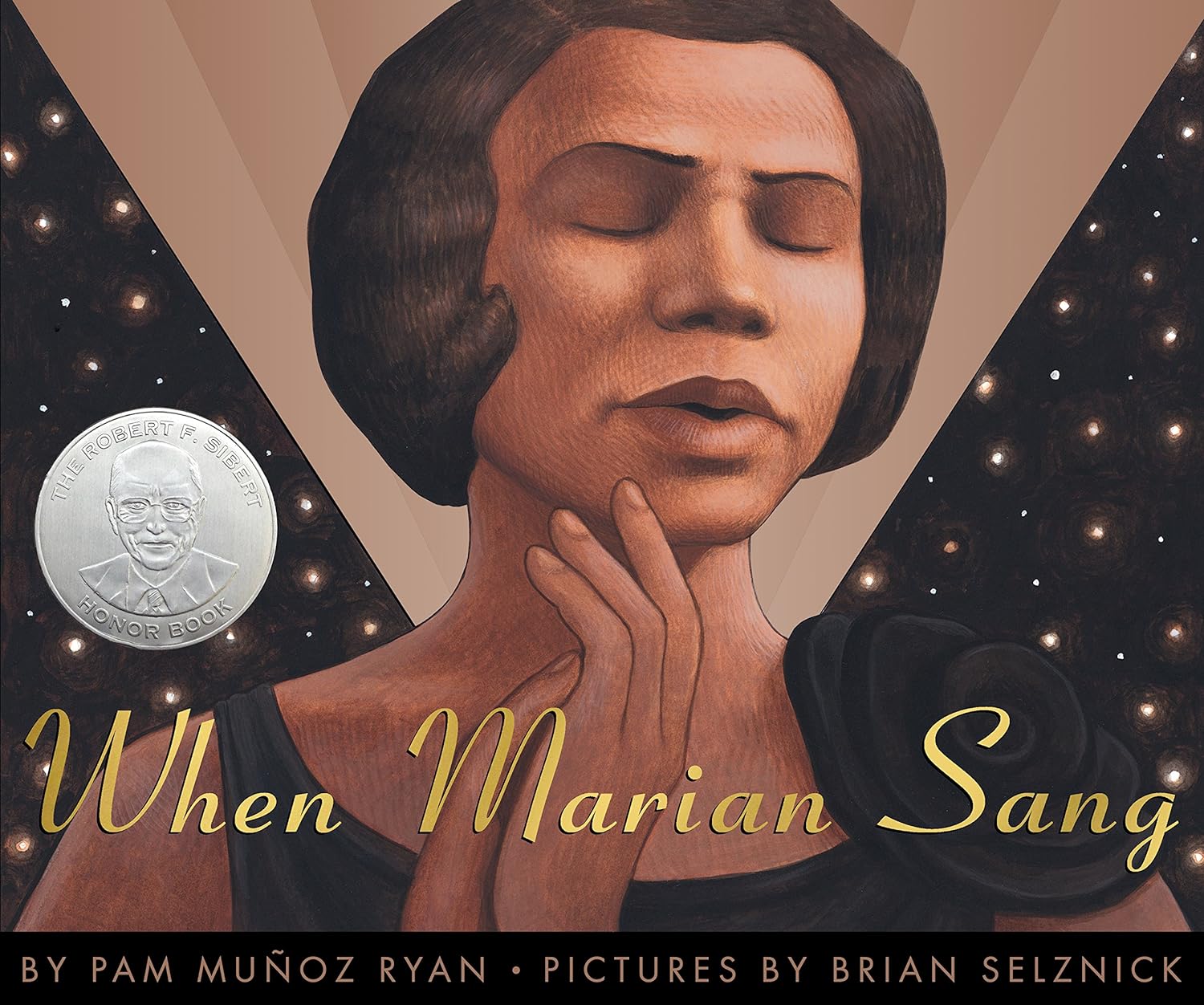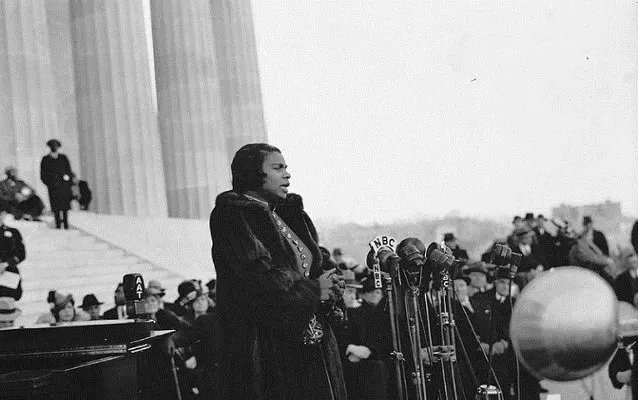Frist Art Museum in collaboration with Nashville Opera
When Marian Sang
It wasn’t clear what to expect. A collaboration between an art museum and an opera company was unusual enough to pique curiosity in lovers of both arts. So, on a balmy Sunday afternoon, nearly 100 audience members watched three performers walk on stage. Vinéecia Buchanan, a graduate of Indiana University who currently teaches voice as a Vanderbilt adjunct stood at the podium. Alysha Nesbitt, a Tennessee State graduate who recently appeared with the Portland (OR) Opera swept onstage in a crimson ball gown, and Stephen Carey, chorusmaster for the Nashville Opera, was at the piano.
What followed was an engaging and unexpectedly moving performance. When Marian Sang: The True Recital of Marian Anderson, is a picture book written by Pam Muñoz Ryan, with illustrations by Brian Selznick. It tells the life story of contralto Marian Anderson (1897-1993) from her childhood as a musical prodigy to her achievement as the first African American to sing onstage at New York’s famed Metropolitan Opera.
The book’s pages were shown on the large screen. As a fifth grade-level book, there was too much text with a font too small to be seen by those who might have been hearing impaired. Showing one page at a time might have been a more accessible choice. That choice would have also allowed more focus on Selznick’s beautiful sepia-toned illustrations.
Told with honesty and read by Buchanan with sensitivity, the story starts with Marian as a child and her community’s recognition of her deep voice and accompanying talent. In order to find her a teacher at the highest level, the community banded together to raise money for her education, if she could find a teacher. The book didn’t steer away from difficult issues, such as her exclusion from conservatories in her native Philadelphia because they didn’t “take coloreds.”
Giuseppe Boghetti was an exception. After her rendition of “Deep River” brought him to tears, he nursed her career onto the MET. It should be noted that at the time Anderson appeared at the MET in 1955, the Institute of Musical Art, a school that later became the Juilliard School of Music, had denied training to racial minorities since its founding in 1905. It had only begun to desegregate nine years before her MET appearance.
Periodically throughout the book, Muñoz Ryan includes lyrics of hymns and spirituals Anderson sang. Having the author’s words, “their harmony blended like a silk braid” followed by Nesbitt’s silken voice with Carey’s sensitive accompaniment amplified this graceful narration.

Most of the songs were arrangements by Harry T. Burleigh, one of Anderson’s favorites. Burleigh, for whom an annual festival is run by Professor Patrick Dailey (Nesbitt’s voice teacher) at Tennessee State, was instrumental in bringing spirituals to the concert stage. He was one of the composers whose work Anderson sang at her historic Lincoln Memorial recital when she had been denied access, on racial grounds, to Constitution Hall by the Daughters of the American Revolution.
One point of disappointment with this program was the exclusion of any settings by Florence Price, one of the most prominent female composers in American history. Anderson promoted her works by including one as her finale at the Lincoln Memorial concert. They could have been included Price’s setting of “Go Down, Moses,” whose lyrics were quoted in the book.
As the story and the music continued, the Frist audience was clearly moved at the determination of the little girl, her dream of singing at the MET, and her community’s never-ending support for one of their own. When the final words of the book were read: “And Marian Sang” followed by Nesbitt singing the aria Anderson had performed that memorable night, “O mio bambino,” from Puccini’s Gianni Schicchi, more than one pair of eyes in the audience glistened with tears.
This is the kind of performance that should be repeated and, given that there were children at the museum, I would suggest an announcement and/or staff members moving throughout, actively encouraging parents to bring their children into the auditorium. I would make sure they knew it was a brief program that included a reading of a children’s book and live music. Certainly, more children would have benefitted by hearing this inspiring story with wonderful music, while viewing beautiful illustrations.



